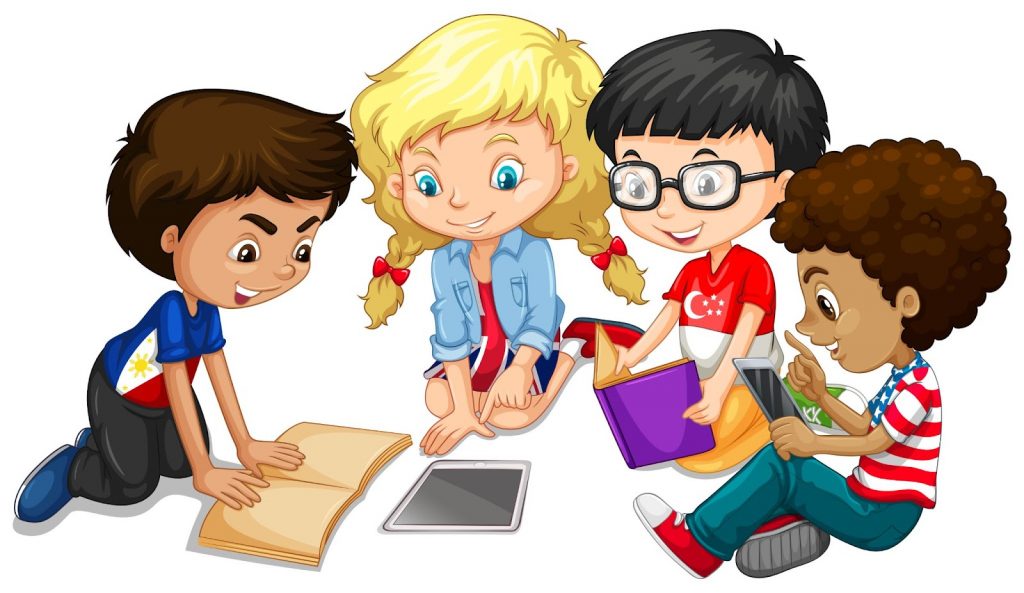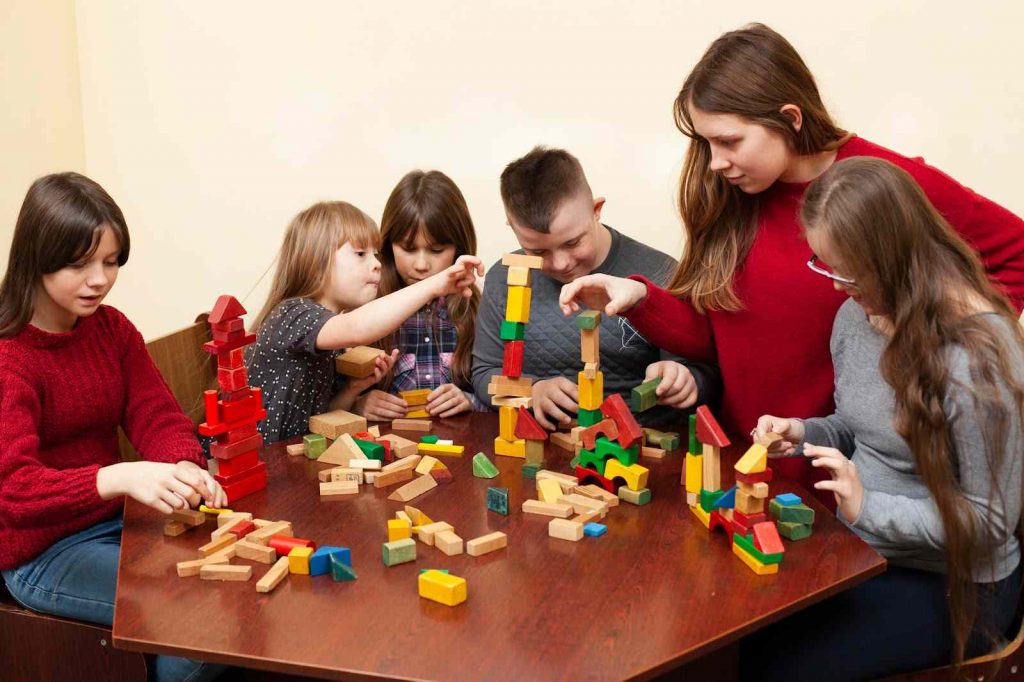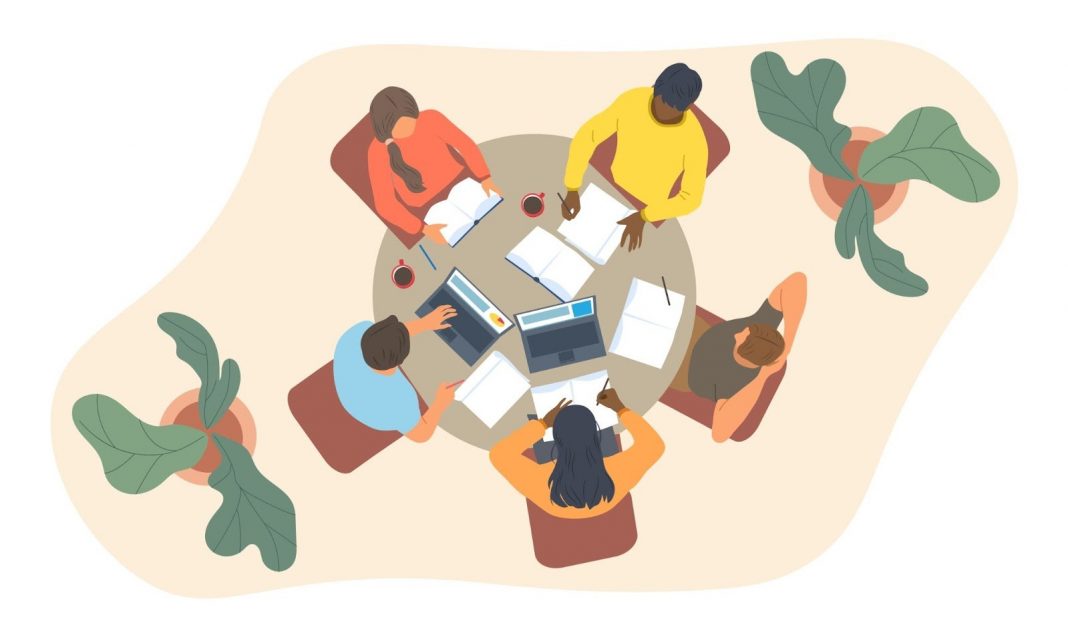Teaching methods have come a long way, but traditional lectures are still common in schools and colleges. Yet, how often do these conventional methods truly captivate and involve our students in the learning journey? Consider this: a 2023 study by Dang Ngoc Trung points out a critical gap in traditional education. Trung notes, “Although lectures remain a staple, there’s a growing consensus on the need for more active student involvement in learning.”
Math & ELA | PreK To Grade 5
Kids see fun.
You see real learning outcomes.
Watch your kids fall in love with math & reading through our scientifically designed curriculum.
Parents, try for free Teachers, use for free
This insight opens the door to alternative teaching strategies, with cooperative learning standing out as a particularly effective approach. Not only does it engage students more deeply, but Trung’s research also indicates superior learning outcomes compared to traditional methods.
Have you ever wondered how a classroom dynamic changes when students work together, solving problems, discussing concepts, and teaching each other? This blog aims to delve into just that. In this blog, we will explore the nuances of cooperative learning, its evolution, benefits, and practical applications in modern classrooms.
Looking for innovative teaching methods? Discover SplashLearn’s interactive learning platform.
What is Cooperative Learning?

Cooperative Learning: Cooperative learning is a teaching method where students work together in small groups to help each other learn and complete tasks. Each group member is responsible not only for their own learning but also for helping their teammates learn. This method often involves dividing tasks, sharing ideas, and working towards common goals. In cooperative learning, the teacher’s role is to guide and support rather than to provide direct instruction.
Related Reading: What is Cooperative Play? Stages, Benefits and Examples
How Do Cooperative Learning Differ from the Traditional Approach?

Overview of Traditional Teaching Methods
A teacher-centered approach often characterizes traditional teaching methods. In this setup, the teacher is the primary source of information, and students are expected to listen, take notes, and remember the information. Lessons typically involve lectures, textbook readings, and individual assignments. This method focuses more on memorization and individual student performance.
Contrasting Traditional Methods with Cooperative Approaches
Cooperative learning methods stand in contrast to these traditional approaches:
| Aspects | Traditional Methods | Cooperative Methods |
|---|---|---|
| Role of the Teacher | The teacher is the main figure, delivering information directly to students. | The teacher acts as a facilitator, guiding students in group work. |
| Student Participation | Limited to listening and note-taking. | Encourages active engagement, discussion, and idea sharing. |
| Learning Process | Focuses on individual learning and competition for grades. | Promotes teamwork, shared understanding, and group problem-solving. |
Impact on Student Engagement and Learning Outcomes
Cooperative learning has a significant positive impact on student engagement and learning outcomes. These methods help students develop critical thinking and problem-solving skills, as they are not just passive receivers of information but active participants in the learning process. Students learn to communicate effectively and work in teams, leading to a deeper and more comprehensive understanding of the subject matter.
Maximize student engagement and learning outcomes with SplashLearn.
4 Benefits of Cooperative Learning

- Enhancing Critical Thinking and Problem-Solving Skills: One of the key benefits of cooperative learning in the classroom is enhancing critical thinking and problem-solving skills. Students are exposed to diverse perspectives and approaches to solving problems. This environment challenges them to think critically, evaluate ideas, and develop effective solutions collaboratively.
- Fostering Teamwork and Communication: Students learn to articulate their thoughts, listen to others, and build consensus. Working in groups teaches them how to negotiate, resolve conflicts, and cooperate toward achieving common goals. These skills are essential for success in both academic and professional settings.
- Benefits of Diverse Learning Styles and Abilities: In cooperative learning groups, students can learn from each other in ways that might be more effective than traditional teaching methods. For example, a student who struggles with textbook learning might find it easier to understand a concept through a peer’s explanation or a group activity. This inclusive approach helps ensure that all students have the opportunity to engage with and understand the material.
- Long-Term Impacts on Students’ Academic and Personal Development: The benefits of cooperative learning extend beyond academic success. Students develop a sense of responsibility, self-esteem, and empathy as they work closely with peers from different backgrounds and with varying abilities. These experiences contribute to their overall personal development, preparing them to be more effective and empathetic individuals.
How to Integrate Cooperative Learning with Other Educational Techniques
Blending Traditional and Modern Teaching Methods
Integrating cooperative learning with traditional teaching methods can create a balanced and comprehensive educational experience. While traditional lectures provide foundational knowledge and structure, cooperative activities enrich this learning, making it more engaging and practical. For example, a teacher might start with a lecture introducing a new concept and then have students work in groups to apply this concept through a project or discussion.
2 Examples of Successful Integration
- Project-Based Learning: In a science class, after a series of lectures on environmental science, students could be grouped into cooperative learning teams to work on a project like designing a sustainable ecosystem. This approach allows students to apply their theoretical knowledge in a practical, collaborative setting.
Related Reading: How to Build Effective Project-Based Learning Plans for Classrooms
- Flipped Classroom: Students might watch lecture videos or read materials at home in a flipped classroom model. Then, they engage in collaborative activities in class to deepen their understanding, discuss concepts, and solve problems together.
4 Tips for Teachers to Implement These Methods Effectively
- Start Small: Begin with short, structured group activities to build students’ and teachers’ confidence and skills.
- Clear Objectives and Roles: Define clear learning objectives and roles within groups to ensure focused and productive collaboration.
- Diverse Grouping: Rotate group members regularly to expose students to various peers, enhancing their ability to work with different people.
- Feedback and Reflection: Provide regular feedback and encourage students to reflect on their group interactions and learning processes.
Addressing Challenges and Finding the Right Balance
Integrating cooperative learning isn’t without challenges. It requires careful planning to ensure that group activities are meaningful and aligned with learning objectives. Teachers must be mindful of group dynamics and prepared to intervene when necessary to keep the group on track. Balancing these active learning strategies with traditional teaching methods is key. This balance ensures that students acquire knowledge and develop essential skills like teamwork, communication, and critical thinking.
Conclusion
Cooperative learning methods offer a dynamic complement to traditional teaching, bringing many benefits to the classroom. By fostering critical thinking, teamwork, and diverse learning styles, these approaches prepare students for both academic and real-world challenges. Integrating these methods with conventional teaching techniques can create a more engaging, inclusive, and effective learning environment. As educators, our goal should be to blend the best of both worlds, ensuring our students are well-informed and well-equipped with essential life skills. The journey towards integrating these innovative teaching strategies is ongoing, but the outcomes are undoubtedly rewarding for students and teachers.
Be sure to check out What is Blended Learning? and What is Synchronous Learning?
Frequently Asked Questions (FAQs)
What are cooperative learning groups?
Cooperative learning groups are small, structured teams of students working together towards a common academic goal. Each member is responsible for their own learning as well as for helping their teammates learn, promoting an environment of mutual support and shared success.
What are the main challenges when implementing cooperative learning in the classroom?
Implementing cooperative learning can be challenging due to diverse student personalities, varying skill levels, and the need for effective group management. Teachers must be prepared to facilitate group dynamics and ensure equal participation.
How can cooperative learning be assessed effectively?
Assessment should focus on both individual contributions and group outcomes. Using a mix of self-assessments, peer evaluations, and teacher observations can provide a comprehensive view of each student’s learning and participation.
Can these methods be applied in large classes?
Yes, cooperative learning can be adapted for large classes by forming multiple small groups. This requires careful planning and possibly more facilitation to ensure each group functions effectively and stays on task.
























